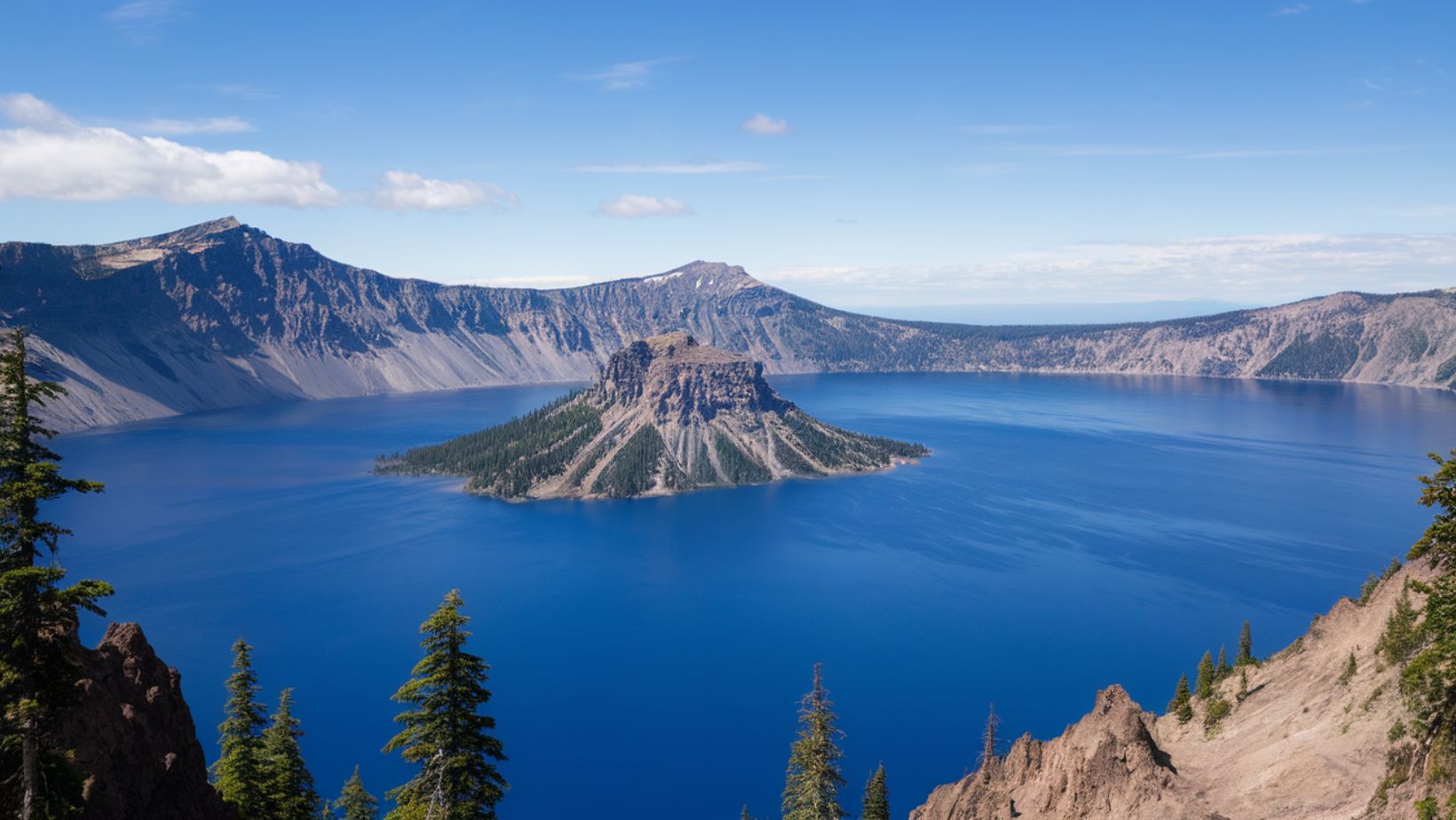What cataclysmic event created the deepest lake in the United States, filled with water so pure it sets global standards? How does this massive crater maintain water clarity that allows visibility down to 100 feet deep? Why does only one trail among miles of rim allow access to these pristine waters? At Crater Lake, where volcanic destruction gave birth to extraordinary beauty, nature demonstrates its power to create perfection from chaos.
Crater Lake Stands as Earths Benchmark for Water Purity
Plunging 1,949 feet deep, Crater Lake represents nature’s perfect water filtration system. Like other magical natural pools, its waters hold special properties – but none can match its purity. The lake contains approximately 4.6 trillion gallons of water, maintained solely by precipitation and snowmelt, with no rivers flowing in or out. This isolation creates the purest large body of water known to exist on Earth.
Volcanic Origins Created Perfect Conditions
The lake’s formation story begins with the catastrophic eruption and collapse of Mount Mazama approximately 7,700 years ago. Similar to how Earth’s largest cave systems formed through dramatic geological events, Crater Lake emerged from one of North America’s most significant volcanic episodes. The resulting caldera, spanning six miles wide, created an impermeable basin that would eventually hold the world’s purest large water body.
Cleetwood Trail Provides Exclusive Water Access
Among the 33-mile rim surrounding the lake, only the Cleetwood Trail offers safe passage to the water’s edge. Like hidden mountain passes that redefine adventure, this 1.1-mile trail drops 700 feet through volcanic cliffs to provide the sole authorized access point to these sacred waters. The trail’s careful design and maintenance protect both visitor safety and water quality.
Scientific Studies Reveal Extraordinary Water Properties
The lake’s exceptional clarity results from multiple natural factors. With no incoming streams carrying sediment, and extreme depth limiting algae growth, the water achieves unprecedented purity. Scientists use specialized equipment to measure clarity down to 100 feet, making it a global reference point for water quality research.
Unique Blue Color Demonstrates Perfect Chemistry
Crater Lake’s distinctive blue color comes from the way pure water molecules scatter sunlight. The extreme depth absorbs all other colors of the spectrum, reflecting back only the purest blue. This natural phenomenon creates what scientists consider the truest blue found in nature, unmatched by any other water body.
Ecosystem Maintains Delicate Balance
Despite its isolation, Crater Lake supports a complex ecosystem. The introduction of fish species in the early 1900s created a self-sustaining population, while unique bacterial communities thrive in deep thermal vents. Research continues to reveal new aspects of how life adapts to these pure waters.
Weather Patterns Create Dynamic Viewing Experience
The lake’s location at 6,178 feet elevation generates distinctive weather patterns. Summer brings crystal clear views and calm waters perfect for boat tours, while winter transforms the rim into a snow-covered wonderland receiving an average of 43 feet of snow annually. These seasonal changes affect water clarity and create varying photographic opportunities.
Conservation Efforts Protect Pristine Waters
Maintaining Crater Lake’s exceptional purity requires comprehensive protection measures. Park managers carefully control all activities near the water, monitor snow removal methods to prevent contamination, and conduct regular water quality testing. These efforts ensure the lake remains a benchmark for natural water purity.
Research Activities Advance Scientific Understanding
Scientists use Crater Lake as a natural laboratory for studying water chemistry, geological processes, and climate change impacts. Long-term monitoring programs track changes in water quality, while deep-water research reveals new insights about volcanic lake systems. This research contributes to global understanding of water resource management.
Cultural Significance Spans Generations
Native American tribes consider Crater Lake a sacred site, with the Klamath people incorporating it into their traditional beliefs for thousands of years. Modern visitors continue to find spiritual connection in its pristine beauty, creating a bridge between ancient reverence and contemporary appreciation.
Future Challenges Require Innovative Solutions
Climate change and increasing visitation pose significant challenges for preserving Crater Lake’s purity. Park managers implement adaptive strategies to protect water quality while providing meaningful access. These efforts include upgrading infrastructure, improving visitor education, and developing new monitoring technologies to detect potential threats to water quality.
